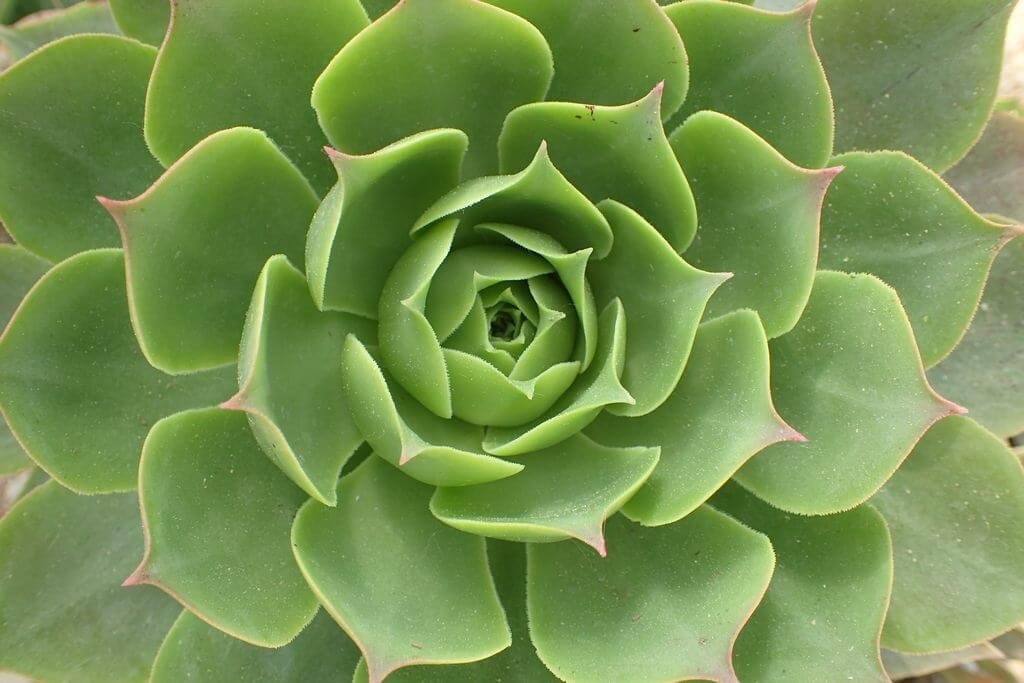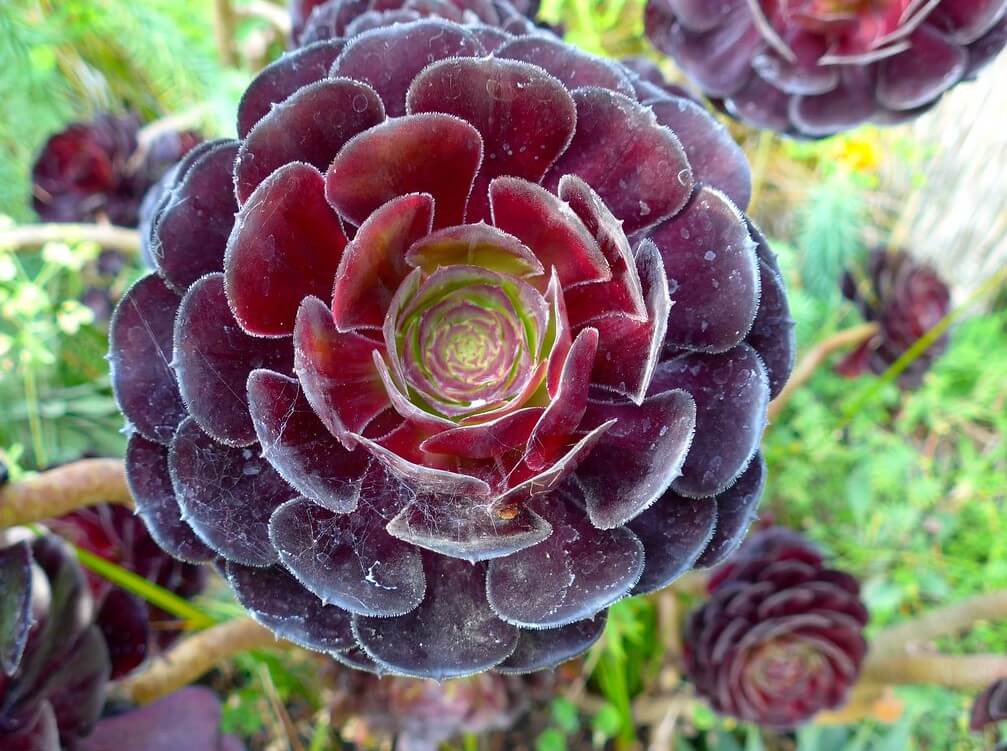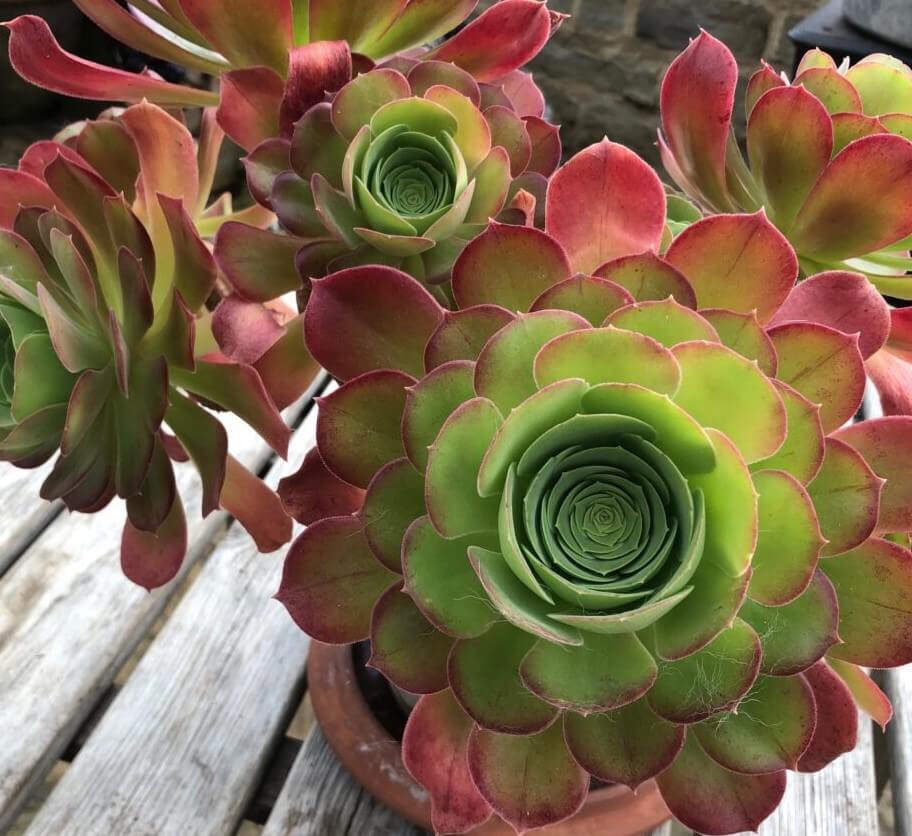Aeoniums are sculpted succulent plants. Their waxy green leaves form rosettes. They stand alone like modern art in homes and gardens.
Aeoniums come from the Canary Islands. They belong to the family Crassulaceae. People must know how to care for these plants.
They appreciate aeoniums not just for their looks but because they need little care. They can live in many places.
Caring for aeoniums well involves more than just keeping them alive. Whether it is an aeonium arboreum that turns its leaves to the sun or a colorful aeonium haworthii that brightens a room, each plant has its own needs.
I will tell about growing aeoniums inside and outside. But first, their soil, water and light needs come first. Know these things and your plants will do well. With the right care and an artist’s eye, you can successfully grow aeoniums yourself.
Key Takeaways
- Caring for aeoniums is like where they come from. Make their home with the right soil, light and water.
- Know how to grow them means they need bright sun, not hot sun. Their soil must drain well so roots stay dry.
- Give aeoniums water when the soil is dry. Too much water will drown them. Learn their water needs inside and out.
- Inside, they want light but not hot sun. Keep the right air and humidity. Check them through the seasons.
- Changing their care with the seasons keeps them healthy and shows their rosette shape.
- With the right care, aeoniums will do well in a garden. Learn them and your garden will succeed.
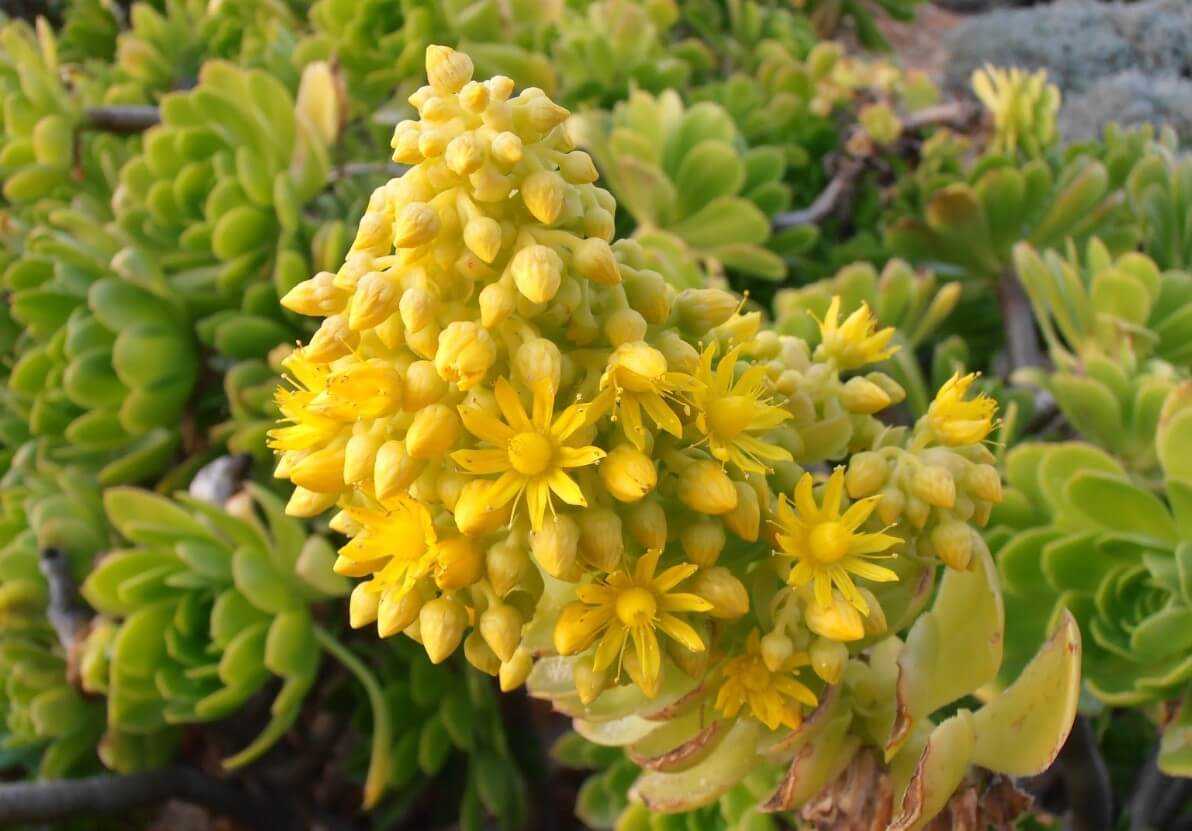
Understanding the Aeonium Genus
The Aeonium genus has many types of plants. They come in different shapes and needs. This story looks closely at aeoniums. Famous ones like Aeonium arboreum and Aeonium haworthii each have their own style.
Native to the Canary Islands, they have adapted to live in homes and gardens. They also do well in warm climates like the Mediterranean.
Each aeonium grows differently and blooms only once before it dies. But with good care they can live many years and bloom again. It is important to know how each plant grows to keep them healthy.
| Species | Common Name | Characteristics | Origin |
|---|---|---|---|
| Aeonium arboreum | Tree Houseleek | Lush rosettes on branching stems; deep green leaves | Canary Islands |
| Aeonium haworthii | Haworth’s Aeonium | Blue-green leaves with pink edges forming compact rosettes | Canary Islands |
Learning more about the Aeonium genus, we find their appeal goes deeper. These plants show nature’s wonders through change and variety. Aeonium haworthii and aeonium arboreum each differ in their own ways.
With understanding of the types, we can care for them as they care for themselves in nature. Then our succulents will thrive to their best, beautiful selves. Tailored care reminds them of home and lets their nature show fully.
The Perfect Environment for Aeoniums
| Location | Light Conditions | Pros | Cons |
|---|---|---|---|
| East-facing window | Morning sun, indirect light | Soft light reduces risk of sunburn | May need supplementary light in winter |
| Garden with partial shade | Filtered sunlight | Imitates natural habitat | Requires strategic placement to avoid midday sun |
| South-facing window | Most daylight hours | Maximizes growth during non-summer months | Summer shade adjustments necessary |
| Greenhouse with shade cloth | Diffused, controlled sunlight | Consistent light levels; protection from elements | Additional infrastructure required |
Aeonium Soil and Watering Essentials
For our cherished Aeoniums, the foundation of good health lies in a soil mix that provides excellent drainage.
We recommend using a potting mix specifically formulated for cacti and succulents, with ingredients that foster well-draining soil conditions.
Not only does this mimic their natural rocky habitats, but it also prevents the dreaded root rot by maintaining a balance between moisture retention and drainage.
Proper Watering Techniques
When it comes to watering, we strive for the golden rule of succulent care: proper watering is a balancing act.
Aeoniums demand a deep watering method that quenches the plant roots thoroughly, yet we must be vigilant to avoid soggy soil. By allowing the soil to completely dry out before the next watering, we foster a cycle akin to their natural arid environment.
During their active growing season, occasional use of a water-soluble fertilizer will provide your Aeoniums with the necessary nutrients to flourish without overwhelming them.
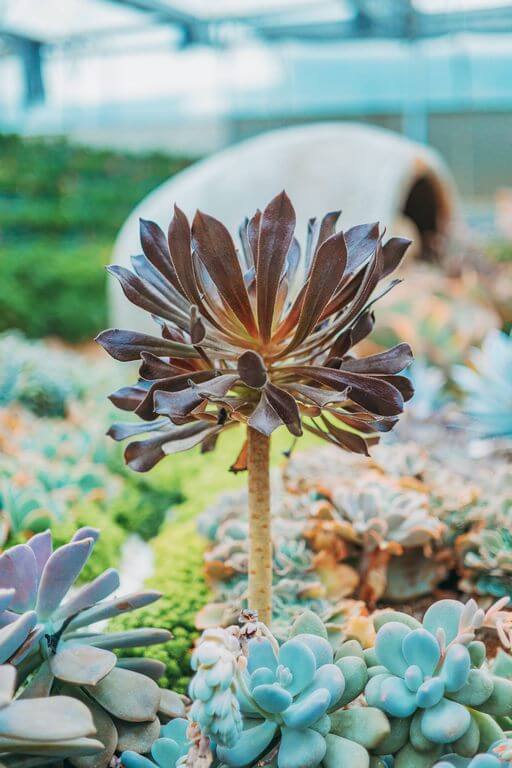
Preventing Water-Related Issues
In our ongoing battle against water-related issues such as overwatering and fungal growth, monitoring is our best defense.
We aim to achieve a level of mastery in observing the moisture levels of our potting mix, employing tools like moisture meters or the trusty feel of the soil with a finger.
Ensuring proper drainage in the pot is another layer of protection, an armor against the excess water that can spell doom for these resilient yet delicate plants.
Aeonium Care throughout the Seasons
As custodians of an indoor aeonium garden or outdoor aeonium displays, we must recognize that changing seasons herald shifts in our aeonium care approach.
Spring heralds the beginning of the growing season; our attentions pivot towards ensuring our aeoniums receive consistent watering and ample sunlight. It’s a critical period when kiwi aeoniums and their kin burst forth in growth, leveraging the moderate temperatures and lengthening days.
Summer’s arrival necessitates a strategic reduction in watering, a practice aligned with our plants’ natural dormancy phase. In this hotter climate, we are mindful to shield our aeoniums from excessively high temperatures that could stress their robust yet susceptible constitutions.
As fall whispers the promise of cooler days, a nuanced increment to watering is permitted, though prudence guides our hand, especially when transferring our cherished flora from garden to abode.
Through winter’s chill, restraint continues to be our watchword in both watering and fertilizing—abstaining from the latter entirely to avoid upsetting the plants’ restful equilibrium. Restoration and rejuvenation come through regular maintenance: pruning away what has withered to encourage new growth.
This cycle of attentive aeonium care, responsive to the subtle cues of the seasons, ensures that our succulent companions will continue to grace our gardens with their distinctive beauty, undiminished.
FAQ
How do I care for an Aeonium plant?
Caring for an Aeonium plant involves providing it with well-draining soil, ensuring it receives the right amount of sunlight (full sun to partial shade), and watering it properly—allowing the soil to dry out between waterings. Pay close attention to temperature and avoid extreme cold or hot conditions, aim for 65 to 75 degrees Fahrenheit. During the growing season, you can apply a water-soluble fertilizer sparingly.
Can Aeoniums grow indoors as well as outdoors?
Yes, Aeoniums can thrive both indoors and outdoors. Indoors, place them in a location where they can receive plenty of sunlight, such as a south-facing window that gets at least six hours of sunlight a day. Outdoors, they should be in a spot that gets plenty of morning sun but is protected from the intense midday sun. Ensure the climate conditions are suitable, especially avoiding frost.
What are the most common types of Aeonium?
Some of the most common and popular types of Aeonium are Aeonium arboreum, often referred to as tree houseleek, and Aeonium haworthii, known as Haworth’s aeonium. These types are well-loved for their distinctive rosette patterns and ease of care.
How much sunlight do Aeoniums need?
Aeoniums prefer full sun to partial shade, with around six hours of sunlight per day being ideal. They can tolerate direct morning sunlight but should be protected from the intense midday sun to prevent sunburn.
How should I water my Aeonium plants?
Water Aeonium plants deeply but infrequently, allowing the soil to completely dry out before watering again. During their dormant season, usually in the summer, reduce watering frequency. Be mindful not to overwater, as this can lead to root rot.
What kind of soil is best for Aeoniums?
Aeoniums need well-draining soil to prevent water-related issues like root rot. A potting mix specific for cacti and succulents works best, as it usually contains the right balance of soil aeration and drainage needed for healthy aeonium growth.
How do I propagate Aeoniums?
Propagate Aeoniums using stem cuttings. Take a healthy stem and cut a few inches from the top. Allow the cutting to dry and callous over for a few days to prevent rot. Then, plant the cutting in well-draining soil and water sparingly until roots develop.
How can I prevent pests and diseases in my Aeonium?
Preventing pests and diseases in Aeonium plants involves regular maintenance checks for early signs of trouble such as withered leaves or unusual spots. Often, pests like mealybugs and spider mites can be treated with insecticidal soap or neem oil. Ensure good air circulation and do not overwater to reduce the risk of diseases.
Can Aeoniums handle cold temperatures?
Aeoniums prefer a mild climate and may not tolerate extreme cold. Protect them from frost by bringing them indoors or providing cover in colder climates. They thrive in temperatures ranging from 65 to 75 degrees Fahrenheit.
When should I fertilize my Aeonium plant?
Fertilize your Aeonium plant during its growing season, which is generally in the spring and fall. Use a balanced, water-soluble fertilizer, applying it sparingly to avoid over-fertilization. Do not fertilize during dormancy stages, typically in the heat of the summer and the cold of the winter.

